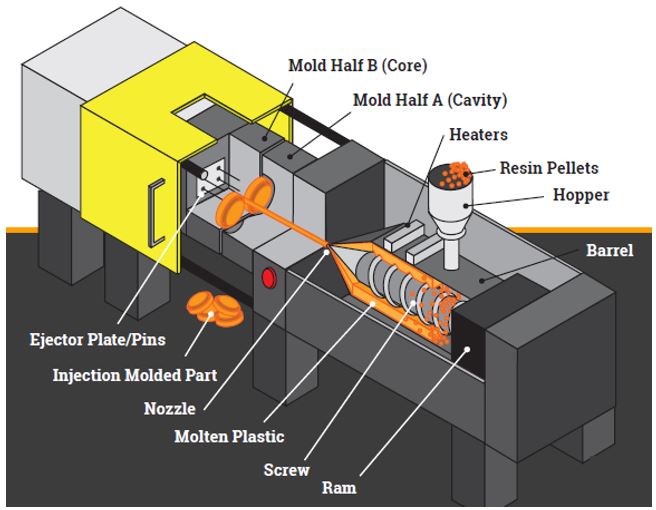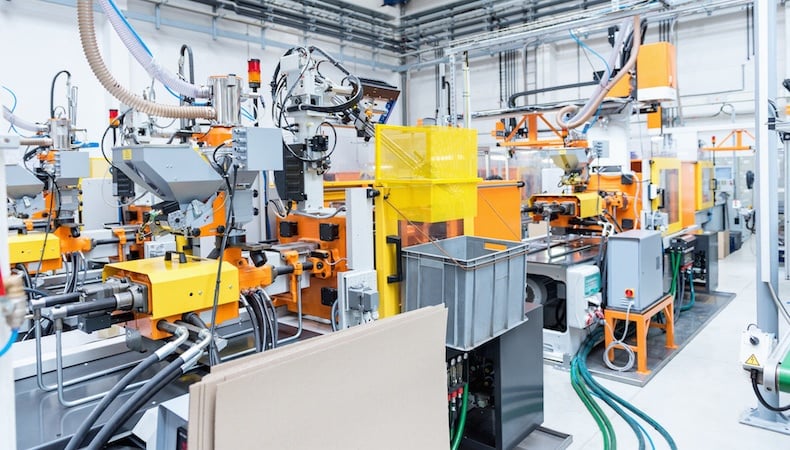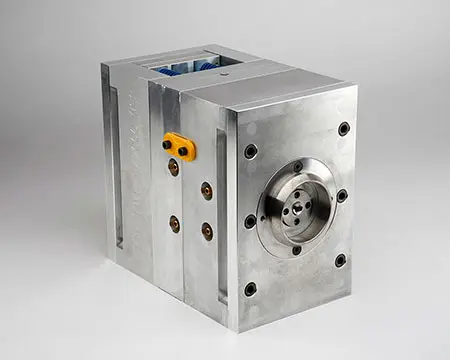Understanding the Plastic Injection Molding Process for High-Quality Production
Understanding the Plastic Injection Molding Process for High-Quality Production
Blog Article
Understanding the Basics of Plastic Shot Molding Procedures
Plastic injection molding functions as a foundation of modern-day production, offering a methodical technique to generating complex elements with precision. This procedure not just includes the basic actions of melting and infusing materials into molds however likewise includes a nuanced understanding of different affecting variables, such as temperature level and stress. As markets progressively demand performance and quality, the complexities of this methodology end up being a lot more crucial. Exploring these important aspects might expose exactly how even small modifications can cause considerable enhancements in production outcomes, raising questions about the possibility for technology in this well-known procedure.
What Is Plastic Injection Molding?
Plastic injection molding is an extensively used production process that changes thermosetting and polycarbonate materials right into specific and complicated shapes. This method is preferred for its capability to generate high volumes of similar get rid of phenomenal accuracy, making it a crucial technique in numerous industries, including vehicle, customer goods, and medical tools.
The procedure involves melting the selected plastic product and infusing it right into a mold under high pressure. The mold, made to the specifications of the desired part, enables the liquified plastic to form as it cools down and strengthens. Once the material has hardened, the mold is opened, and the ended up component is ejected.
Plastic injection molding provides a number of benefits, consisting of lowered waste, uniformity in manufacturing, and the capability to incorporate elaborate styles that may be challenging with other producing techniques. In addition, it supports a broad series of products, each providing distinct buildings that can be customized for details applications. As sectors proceed to introduce, plastic injection molding continues to be at the center, making it possible for the growth of innovative items that satisfy developing consumer demands.
The Shot Molding Refine
The injection molding process is a sophisticated technique that involves numerous vital phases to create premium plastic elements. Plastic pellets are fed into a warmed barrel where they are thawed into a thick fluid. This molten plastic is then infused under high stress into a precision-engineered mold and mildew, which shapes the material right into the desired form.
When the mold is loaded, the plastic is enabled to solidify and cool down, taking the form of the mold dental caries. Cooling time is essential, as it influences the cycle time and the last homes of the shaped part. After sufficient cooling, the mold and mildew opens, and the finished part is ejected making use of ejector pins.

Products Utilized in Injection Molding
Different materials can be utilized in the injection molding process, each offering unique residential or commercial properties that accommodate certain applications. The most typically used materials consist of thermoplastics, thermosetting plastics, and elastomers.

Thermosetting plastics, like epoxy and phenolic materials, go through a chemical change during the healing process, leading to an inflexible, inflexible structure. These products are perfect for applications needing high warmth resistance and structural honesty, often utilized in vehicle components and electrical insulators.
Elastomers, including silicone and rubber-based materials, supply adaptability and resilience. Their distinct properties make them appropriate for applications that demand flexibility, such as gaskets and seals.
In addition, specialty materials like bio-based plastics and composites are acquiring grip for their ecological straight from the source advantages and boosted efficiency features, widening the scope of injection molding applications in various industries. Understanding the homes of these materials is important for choosing the proper kind for details tasks.
Benefits of Shot Molding
Injection molding stands apart as an extremely effective manufacturing process that offers numerous benefits for creating complicated parts with precision. Among the most significant benefits is the capacity to develop complex styles that would be challenging or difficult to achieve with other approaches (Plastic Injection Molding). The procedure enables for tight tolerances and thorough attributes, guaranteeing premium components
In addition, injection molding is known for its quick manufacturing abilities, making it a perfect choice for high-volume production. Once the mold and mildew is produced, parts can be generated rapidly, reducing preparations and increasing total efficiency. This efficiency not only lowers manufacturing costs yet also gives an one-upmanship out there.
The versatility of products used in injection molding better improves its allure. A variety of thermoplastics and thermosetting polymers can be utilized, allowing makers to select products that ideal satisfy their details requirements, consisting of warmth, strength, and versatility resistance.
In addition, the process reduces waste, as excess product can often be recycled and recycled. This sustainability facet adds to a decreased ecological influence, making injection molding a responsible manufacturing selection. On the whole, the advantages of injection molding make it a favored technique for several industries.
Elements Impacting Item Top Quality
While numerous factors can influence product high quality in shot molding, comprehending these components is critical for achieving optimum results. Key aspects include material selection, processing specifications, and mold style.
Material choice plays a crucial function, as different polymers exhibit one-of-a-kind homes that impact flowability, toughness, and thermal security. Insufficient material choice can result in problems such as warping or incomplete dental filling.
Processing parameters, including pressure, temperature, and cycle time, need to be thoroughly managed. Variations in these setups can cause variances in part dimensions and surface coating. For circumstances, excessively heats might trigger destruction of the polymer, while poor pressure can result in brief shots.
Mold layout is similarly vital, as it identifies the flow of the molten plastic and the that site cooling procedure. Badly designed mold and mildews may bring about unequal air conditioning rates, resulting in dimensional errors and residual stress and anxieties.

Verdict
Finally, plastic shot molding acts as an important production process that enables the efficient production of high-quality components. Proficiency of the shot molding process, including the understanding of materials and the impact of numerous aspects on product quality, is important for achieving optimum outcomes. The advantages of this method, such as cost-effectiveness and layout adaptability, additional emphasize its value throughout multiple industries, strengthening its condition as a preferred selection for high-volume reference manufacturing.
Plastic injection molding offers as a foundation of modern manufacturing, supplying a systematic technique to creating complex components with precision.Plastic injection molding uses a number of advantages, including lowered waste, consistency in production, and the capability to incorporate intricate designs that may be challenging with other making techniques (Plastic Injection Molding). As sectors continue to introduce, plastic injection molding stays at the forefront, making it possible for the growth of innovative items that meet advancing consumer needs
The shot molding process is an innovative technique that includes several crucial phases to produce high-grade plastic elements.In verdict, plastic shot molding serves as an essential manufacturing process that makes it possible for the efficient production of high-grade components.
Report this page